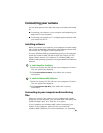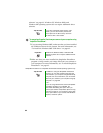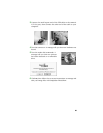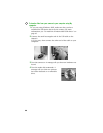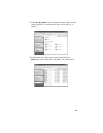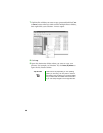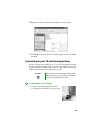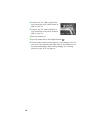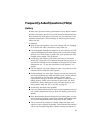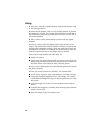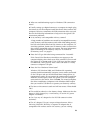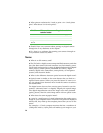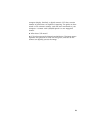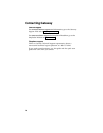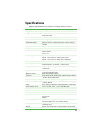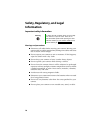71
Frequently Asked Questions (FAQs)
Battery
Q: How can I get better battery performance for my digital camera?
A: When your battery power is low, avoid using the camera functions
that consume the most power. Store and use your batteries at the
optimum temperature. Take advantage of external power sources
when you can.
In addition:
■ Keep at least two batteries: one in the camera and one charging
or in reserve for when you need to swap them out.
■ Use rechargeable Lithium-ion batteries in your Gateway DC-T60
camera. Rechargeable batteries often get up to two times as many
pictures on a fresh charge, so make sure your batteries are fully
charged before taking a lot of pictures.
■ Avoid using the camera’s LCD when you want to extend the
battery life. Using the LCD consumes the most battery power, so
turn off the LCD and use the viewfinder to take pictures. For more
information, see “To use the viewfinder to take pictures:” on
page 21.
■ Use the camera’s AC power adapter to view your pictures on the
camera without using the battery power.
■ Avoid operating the zoom lens. Using the zoom lens forces the
lens to extend and retract with each power cycle. Set the camera’s
Auto Off mode to a longer time setting. A better power
conservation strategy is to leave the camera on when you are
taking pictures within a few minutes of each other. For more
information about changing the Auto Off time setting in the
Setup menu’s Basic tab, see “Auto Off” on page 61.
■ Avoid using the flash when possible.
■ Use your camera and batteries as close to room temperature as you
can. Colder temperatures tend to drain the battery power more
quickly.
■ Store spare batteries that are charged in the coolest place you can
find (at or above freezing), but be sure to bring cold batteries back
up to room temperature before using them in the camera.
■ Use an external card reader to transfer image files from your
camera to your computer if possible. This method of file transfer
will let you manage image files without turning the camera on.



